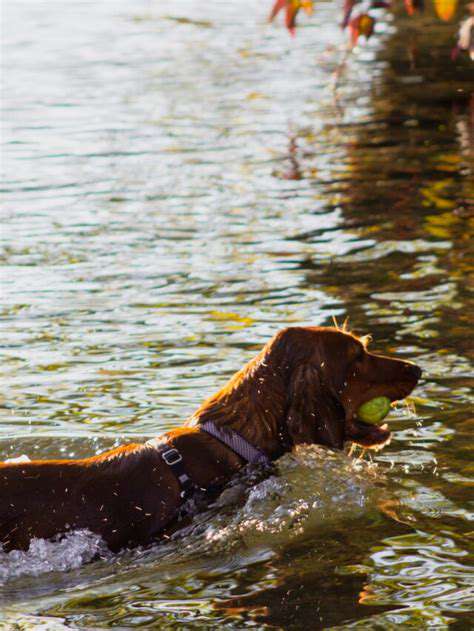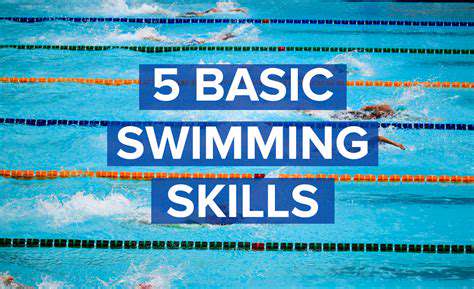How to teach your dog to swim safely
Evaluating Physical Readiness and Health Factors
Comprehensive health evaluation precedes any aquatic introduction. Schedule a veterinary consultation to assess joint health, cardiac function, and overall fitness. Certain conditions like arthritis or respiratory issues may require activity modifications. Your vet can recommend appropriate water exposure based on your dog's specific health profile.
Age significantly impacts aquatic capability. Puppies under six months often lack coordination for safe swimming, while senior dogs may tire quickly. Tailor water sessions to your dog's developmental stage, beginning with brief wading experiences and gradually increasing duration as stamina improves.
Selecting Optimal Aquatic Environments
Location selection dramatically affects success rates. Ideal introductory spots feature:
- Gentle, sandy slopes for easy entry/exit
- Minimal current or wave action
- Clear visibility (avoid murky ponds)
- Comfortable water temperature (test with your elbow)
Environmental conditions require careful monitoring. Postpone water activities during extreme weather, and always verify water quality - algal blooms or chemical runoff pose serious health risks. Maintain constant visual contact whenever your dog is near water, regardless of their apparent comfort level.
Progressive Water Acclimation Techniques
Effective water introduction follows a gradual progression:
- Familiarization with water's edge
- Paw immersion in shallow areas
- Brief belly-depth wading
- Supported swimming (if appropriate)
Respect individual pacing - forcing progress creates setbacks. Multiple short sessions (5-10 minutes) yield better results than infrequent long exposures. Always conclude sessions while your dog remains engaged and positive, ensuring eager anticipation for next time.
Reinforcement Strategies for Water Confidence
Positive reinforcement techniques should emphasize:
- Immediate reward delivery for any water interaction
- Variable reinforcement schedules to maintain interest
- Verbal markers paired with treats (Yes! before treating)
Negative experiences create lasting aversions - never correct or force water contact. Instead, shape desired behaviors through successive approximations, celebrating incremental progress.
Essential Safety Protocols
Vigilant supervision prevents most water-related incidents. Essential precautions include:
- Fitted canine life jackets for initial swimming attempts
- Non-slip pool edges or shoreline footing
- Emergency exit strategies
- Basic canine CPR knowledge
Leashes provide control in unfamiliar settings, but avoid restrictive tethers that could entangle. Designate a water buddy system where another person assists with monitoring during group outings.
Appropriate Aquatic Gear Selection
Specialized equipment enhances safety and enjoyment:
| Equipment | Purpose |
|---|---|
| Canine life vest | Buoyancy support |
| Water retrieval toys | Motivational tools |
| Non-slip ramp | Pool access |
Ensure proper fit for all gear - ill-fitting vests may chafe or restrict movement. Introduce equipment on land first, associating it with positive experiences before water use.

For comprehensive child safety guidelines, review these hazard prevention strategies.
Developing Swimming Skills with Patience and Consistency

Establishing Foundational Aquatic Skills
As highlighted in this canine health resource, water competency develops through systematic skill-building. Core competencies include breath control, buoyancy management, and propulsion techniques that combine to create efficient movement. These fundamentals require isolated practice before integration into complete strokes.
Body positioning significantly impacts performance - horizontal alignment reduces drag, while proper head placement facilitates breathing. Mastering these elements early prevents compensatory movements that become difficult to correct later.
Mastering Respiratory Control
Effective breathing separates proficient swimmers from struggling ones. Key principles include:
- Exhaling fully underwater
- Synchronizing breaths with stroke cycles
- Maintaining rhythmic patterns
Breath-holding drills build lung capacity while bilateral breathing develops balanced musculature. Practice initially while stationary before incorporating movement. Never compromise stroke quality for air - proper technique ensures adequate oxygenation.
Skill-Specific Training Drills
Targeted exercises accelerate skill acquisition:
| Drill | Focus Area |
|---|---|
| Kickboard exercises | Leg propulsion |
| Fingertip drag | Arm recovery |
| Catch-up stroke | Timing coordination |
Incorporate equipment like pull buoys and paddles judiciously - these training aids highlight specific technique elements but can reinforce poor habits if overused.
Stroke Development Progression
Logical stroke introduction follows this sequence:
- Freestyle (front crawl)
- Backstroke
- Breaststroke
- Butterfly
Each stroke builds upon previously mastered skills while introducing new challenges. Freestyle establishes basic propulsion and breathing, while backstroke reinforces body position. Breaststroke introduces simultaneous limb movements, preparing for butterfly's demanding coordination.
Aquatic Safety Competencies
Essential safety knowledge includes:
- Recognizing rip currents
- Understanding depth markers
- Emergency exit procedures
- Basic rescue techniques
Pool etiquette ensures harmonious shared use - maintain lane discipline, pass safely, and respect others' space. These protocols prevent collisions and create positive aquatic environments.
Optimizing Practice Sessions
Effective training incorporates:
- Structured warm-ups/cool-downs
- Technical focus periods
- Endurance intervals
- Recovery segments
Quality supersedes quantity - focused, mindful practice yields faster improvement than mindless repetition. Video analysis provides valuable external feedback, revealing technique flaws invisible to the swimmer. Partner with coaches or experienced swimmers for periodic evaluations.